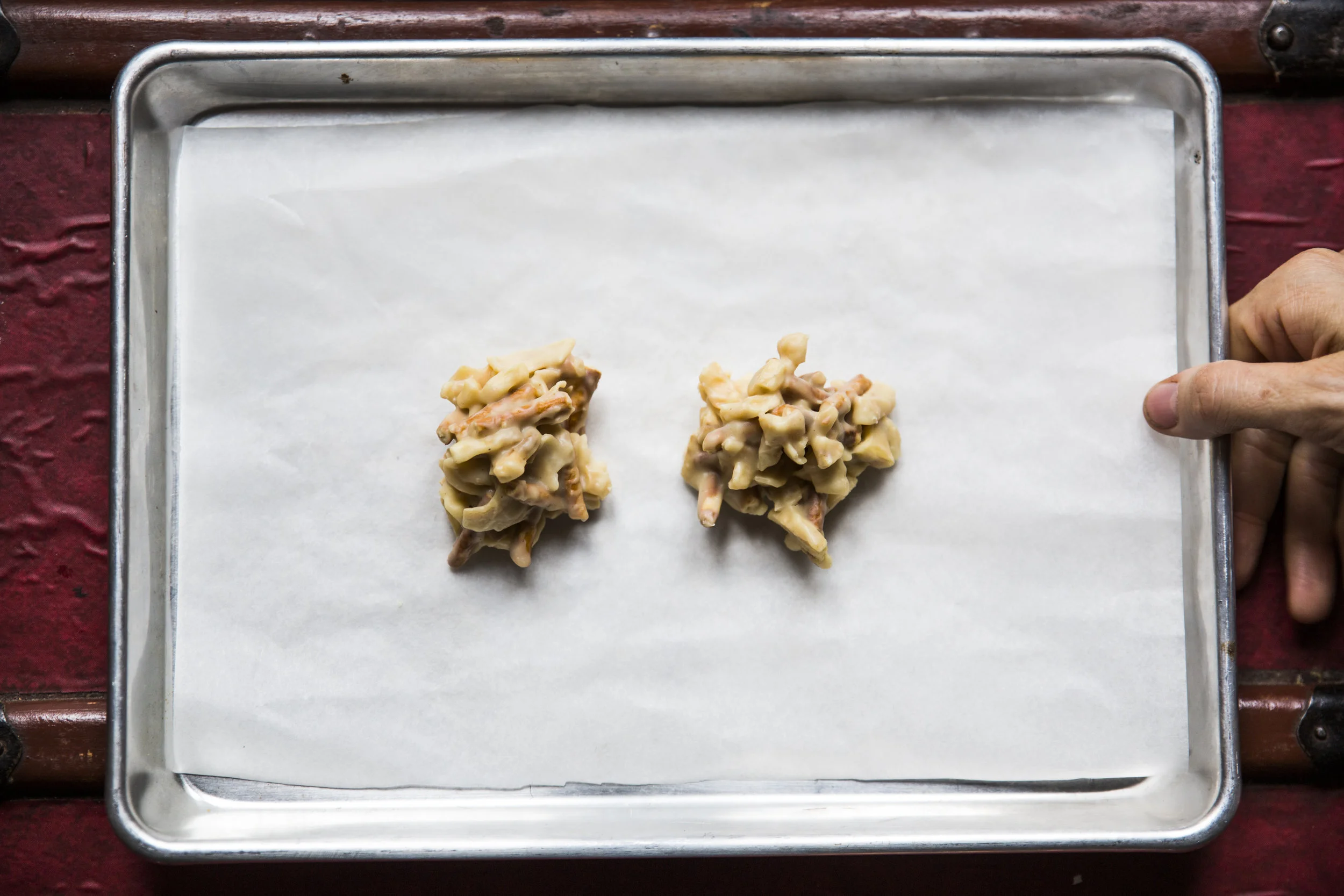Cooking with Cannabis
Published Oct. 13, 2018
As a chef it is always interesting for me to discover and research a new ingredient. Cannabis, on the cusp of legalization in Canada, and in the context of its potential application in food is no exception. Still, when the initial request for the assignment came in from my editor I had to laugh. Far from an experienced user myself, and long having written off edibles (thanks to once snacking on a horrible-tasting, heavily dosed weed cookie), what would I be getting myself into?
I decided to reach out to an expert for some help. Dan Sutton is the owner of Tantalus Labs in Maple Ridge, B.C. where they grow medical-grade cannabis in greenhouses using the power of sunlight. He is a passionate and experienced user with lots of great insight for beginners.
Both Sutton and I agree that the prospect of having an unpleasant experience is one of the biggest turn-offs for anyone thinking of giving edibles a go. The key, according to Sutton, is to “start low and go slow,” and by that he means “very slow,” as the effects of edibles can take up to two hours (or more!) to develop. An initial dose of 3.5-5 mg of THC will provide the average adult with a detectable psychoactive response, whereas a confident user with a higher, more confirmed tolerance might begin with a dose of 10 mg and work upwards from there. The difference between the two doses may seem small, but the effects of ingesting cannabis are much more impactful than smoking it. “You don’t need much when it comes to edibles,” says Sutton.
Prior to beginning to cook with cannabis it is important to understand that there are three main factors that will affect the strength of any given edible: potency, decarboxylation and infusion.
Cannabis math
Sutton says that doing a little “cannabis math” goes a long way in helping ensure you achieve accurate potency by volume when cooking with marijuana. As the percentage of THC contained in any given strain of cannabis can range anywhere from below 2 per cent to upwards of 25 per cent, Sutton suggests cooking with a strain that has an ACMPR-certified THC content of 10 per cent.
Here is how to break it down:
1g cannabis = 1,000 mg
1000 mg x 10% THC = 100 mg THC
Therefore, 1 g of cannabis with a certified content of 10 per cent THC therefore contains 100 mg of THC.
If we were to then infuse this 1g of cannabis into 10 tablespoons of oil, we would have 10 servings of cannabis oil with a potency of 10 mg THC per serving, or tablespoon if you will. As there are 3 teaspoons in 1 tablespoon, we can therefore assume that a serving of 1 teaspoon would be fairly close to the suggested dose for an average inexperienced user of 3.5 mg THC.
Decarboxylation, what?
Raw, uncured cannabis is non-psychoactive, which means that before beginning to cook with cannabis, the buds first need to go through a process called decarboxylation to become activated. This involves applying steady low heat to the cannabis you intend to cook with in order to transform the naturally contained, non-psychoactive cannabinoid, THCA, into its potent and euphoric cousin, THC, or tetrahydrocannabinol.
Infusion
The other factor that will affect the potency of your edibles will be the length of time the cannabis is infused in the edible. For the purposes of this recipe, infusing the decarboxylated cannabis in oil for 1.5 hours will provide consistent results. Please note that the longer you leave the actual buds in the oil, the stronger your infusion will become.
What about CBD?
If you are still feeling uneasy about consuming THC-infused food, this same three-step process can also be applied to high-cannabidiol, or high-CBD, strains of cannabis as an alternative. Unlike its psychoactive counterpart THC, CBD is said to offer a more relaxing and non-intoxicating experience that apparently also lends itself well to a variety of medicinal uses.
Anything Else?
Before we jump in the kitchen, I feel it is important to acknowledge that cooking with weed is not for everybody. It is a personal choice that should be taken seriously. Cannabis is a powerful and potent medicine and therefore it is recommended that you discuss it with your family doctor before diving in. It most certainly should be kept out of reach of children and pets.
Finally, Sutton recommends using legal cannabis that is purchased through a licensed dealer and has been certified through the Access to Cannabis for Medical Purposes Regulations. ACMPR-regulated cannabis is lab tested and has a certified potency percentage, which is also super helpful for accurately calculating the intended dosage of any edibles you might be making.
Link to recipes here.


